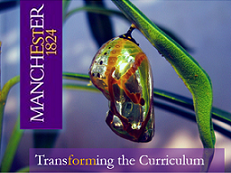Explore The Climate Changing In Los Angeles: Transformative Learning And Sustainability by Ran Wang
With integrating the idea of environmentally adaption solutions with the educational practice, the article indicates the challenges of implying transformative learning into the context of contemporary social and ecological unsustainable conditions. In particular, this article drawing Los Angeles on example- of what environmentally-friendly solutions are identified and advocated to adapt the local climate changes, and how it necessarily connected to innovative learning environments outside the constraints of conventional education.
Los Angeles is known for its mild temperatures, sandy beaches and less rainfalls, which has been degraded by the happening climate changes now. One is that the temperature is rising between a January average of 59 degrees F in winters and an average July temperature of 73 degrees F in summers.

The UCLA climate expect Alex Hall (2012) suggested that this trend will continue because the thermometer in the Los Angeles region are likely to rise by an average of 4 to 5 degrees F by the mid-century, tripling the number of extremely hot days in the downtown area and quadrupling the number in the valleys and at high elevations.

Another significant climate change that will pose enormous risks to coastal Los Angeles includes increased storm intensity, ocean temperature increases, sea-level rise, changing currents, species range shifts, coastal erosion, and ocean acidification. According to the National Research Council (2012), the sea level rise is likely to increase from 5 to 140 cm by 2100, which will magnify the adverse impact of storm surges and large waves. The casing severity of flooding then leads to more extensive coastal infrastructure damage and precisely 10% of the costal populations under risk (Mathew E. Hauer, 2016).

In order to associate the environmentally adaption solutions with the education practice, the HEFCE sustainable development action plan (Lord Stern, 2009) mentioned about the ‘mind need to be available of producing new possibilities’ and to ‘transform the mode of learning and operating’ respectively. Stephen. S argues that the majority of learning engaged in conventional education in schools is of the first order variety, and often delivered through transformative pedagogies within a mutually accepted objectives and beliefs.
It transfers information what does not normally challenge the values of the learner in terms of transformative learning. Instead, this is what Clark (1989, p.236) called ‘change within changelessness’, with maintenance learning that keep adjustments and adaptations stable in the face of change, which can be implement effectively in various teaching and learning environment.
Taking the Los Angeles Environmental Learning Center (ELC) as an example, to adapt the climate changes, Los Angeles based organizations such as the U.S. Green Building Council provide a variety of education programs to support local, environmentally sustainable economies. As a leadership in Energy and environmental design, ELC was developed to bring textbook and classroom learning to life while engaging the City in the commitment of protecting public health and the environment.
The ELC addresses the need for increased public environmental education through docent lead tours of our environmental education exhibits which are compliant to the Next Generation Science Standards (NGSS). Visitors explore their role in Clean Water Treatment and Conservation, Watershed Protection and Solids Resources Management. Located at LA Sanitation’s Hyperion Water Reclamation Plant, and offered free to the community, with the purpose of inspiring next generations to protect the environment, ELC implied sustainable practices with engaging and interactive features, eventually transforming their neighborhoods into cleaner and greener places to live.



To develop the process of educating sustainability, second-level change (Lord Stern, 2009) is required as a significant change in thinking and learning. With examining assumptions and values, meaning of learning will be recognised and negotiated to understand the inner or subjective world. Second-order involves bringing the critically assessing of learners to light and necessarily modifying their beliefs and value. Thus, this learning experience is likely to be more challenging and goes much deeper, because it is of great difficulty for the learner in examining critically in the process of learning and developing the first-order level. Going beyond the first-order level contributes to be more permanent in generating the awareness and understanding of learners.
Particularly, to help facilitate ‘values education’, ELC not only helps to increase the public awareness about the services provided by Bureau of Sanitation, but also to foster changes on the behaviour of water use and solid resources among children and adults in the daily life. This is mainly responsible for its environmental design which aims to maximise the efficient use and management of water resources. Firstly, this effect is principally on account for its sustainable building practices, which means they should include stormwater runoff capture, percolation through permeable pavers and vegetated swale, recycled-water use and smart controls for irrigation, recycled- water use for toilets, water-free urinals, a green roof system, and a constructed wetland. Further, there are other environmentally-friendly construct incorporated to serve environmental education as a community resource.


Generally, ELC contributes greatly to learning with day-to-day environmentally sustainable activities and thereby helping to foster the assumption and belief to achieve cleaner and greener neighborhoods as second level changes among visitors.
Reference:
National Research Council (2012), Sea-Level Rise for the Coasts of California, Oregon, and Washington
Mathew E. Hauer , Jason M. Evans, Deepak R. Mishra (2016), Millions projected to be at risk from sea-level rise in the continental United States, DOL:10.1038
Alison Hewitt (2012), Mercury rising: Greater L.A. to heat up an average 4 to 5 degrees by mid-century, UCLA Newsroom
Ron Mayuyu, Michael Sarullo, and Heather Boyle VanMeter (2013), Los Angeles environmental learning center: Demonstrating and teaching sustainable water resources management, 33-37
Stephen Sterling (2010), Transformative Learning and Sustainability: sketching the conceptual ground, 17-29

